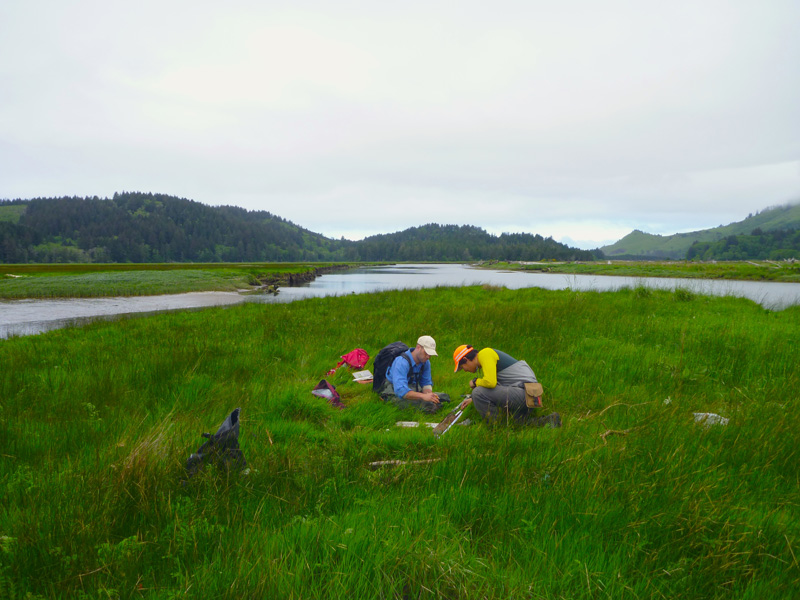
Back in 1700, on January 26 to be exact, an earthquake between 8.7 and 9.2 shook the region that is now northern Washington and southern British Columbia. We know the exact date because of Japan’s careful recording of tsunamis. That day, a ghost tsunami, one with no known earthquake, hit Japan. Tsunami also washed through much of the Cascadia region, destroying numerous villages.
Understanding that historic quake is necessary to understand what will happen when that particular fault lets off energy again. Historically, the fault appears to let go roughly every 300 to 600 years, and, as I said, the last big quake was in 1700. And by “letting go”, I mean that the fault has earthquakes rated magnitude 8 or higher that will trigger devastating tsunamis. Researchers have studied tree rings, inland salt marshes, the histories of the First Nations peoples of the region, and pretty much everything else they can get their hands on.
And, in a new study in the Bulletin of the Seismological Society of America, researchers led by Andrew Kemp document how they have used fossils to study not just the quake of 1700 but also four additional quakes over the past 2,200 years.
This evidence came from the layering of fossils in the Salmon River Estuary. At this site, the tsunami in 1700 pushed material 3.4 kilometers inland. This study’s researchers obtained 105 core samples from around the estuary and also used data from 114 cores used in a study done in the 1980s and 90s. In these cores, they can both see layers of sand and a variety of microfossils that, together, tell a story of these past quakes. For 1700, the story is simple – fifteen meters of slip led to a meter or more of coastal subsidence.
This data was entirely consistent with this fault line being one of the most dangerous in the world. Nothing was found to lessen our reasons to worry. This is your semi-periodic reminder that if you live in an earthquake or tornado region, you need to always have an emergency kit in your car and a go-bag and emergency kit in your house. We’ll have links on our website on how to put one together. Stay safe, folks. The world likes to sometimes rock and roll and slip and slide.
More Information
SSA press release




 Join the Crew!
Join the Crew!
 Escape Velocity Space News
Escape Velocity Space News
0 Comments